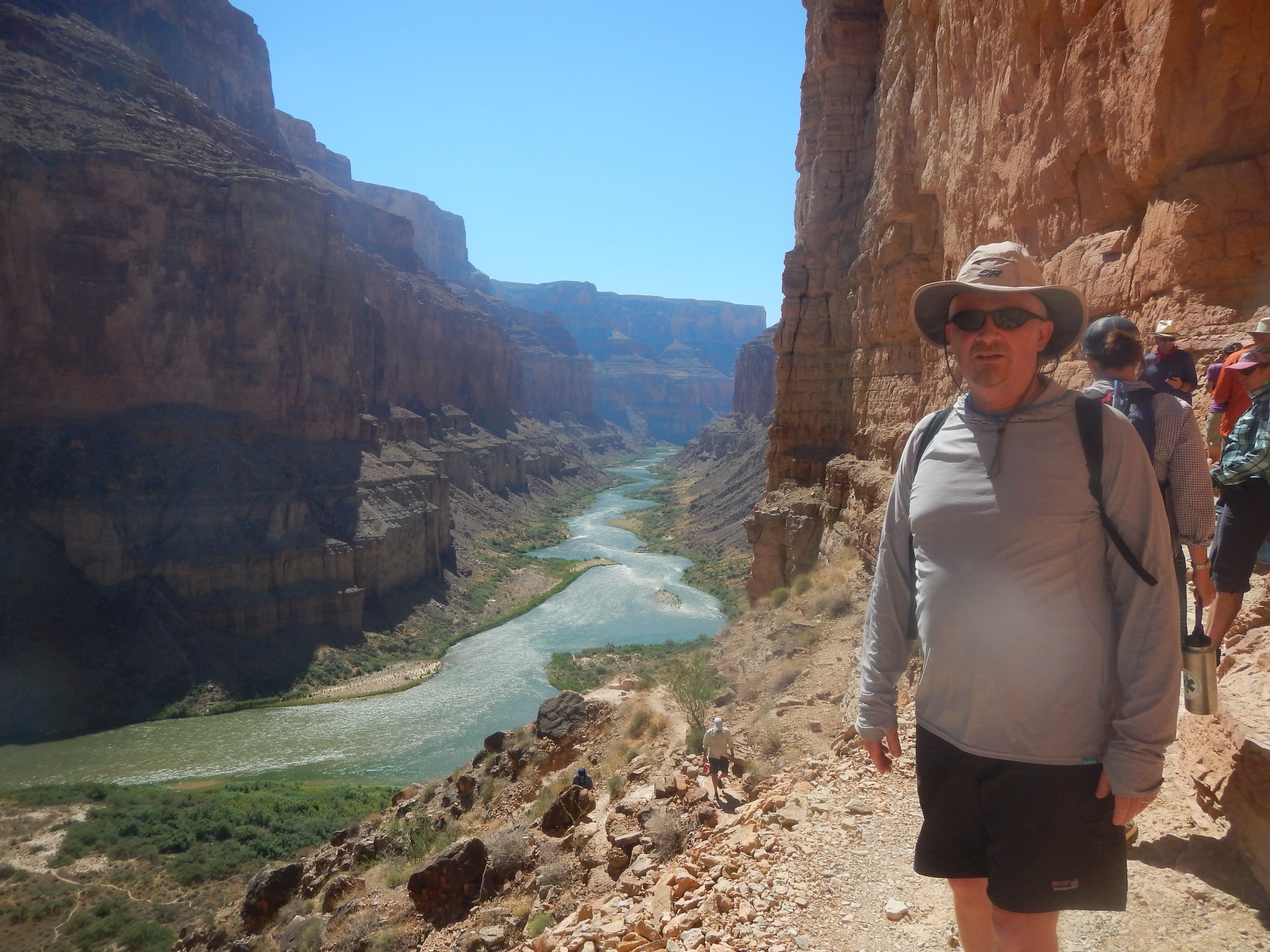A few weeks ago, I was steadying myself on a raft bouncing on the Colorado River through the Grand Canyon. For over 25 years, I have spent each day working to protect America’s rivers – from the historic Penobscot River in Maine to the Tallapoosa River in Alabama to the Klamath River in California – and yet, had never set foot in the Grand Canyon. That changed this August.
Writing this in my Sacramento office, a place filled with folders, charts, pens, and pieces of concrete from dams I’ve helped remove, the magic of the Grand Canyon still sits in me. I can hear my friend and tripmate, Don Sampson, a senior member of the Walla Walla Tribe, offer his blessings and a song to our group as we floated down a quiet stretch of the river. I didn’t understand the words he was singing, but I felt the meaning then, and it stays with me now.
Don and I were part of a group of 15 river lovers and advocates invited to journey with the crew from In the Americas with David Yetman. The day we embarked on the trip was almost 150 years to the day John Wesley Powell set forth on the first known descent of the entire canyon by boat, famously writing in his diary: “We are now ready to start on our way down the Great Unknown.”

Going through the canyon, my tripmates and I bore witness to the remains of the Anasazi civilization that lived on this land 700 to 1,300 years ago. That seems like a long time (and it is!) but it pales in comparison to the timeline of the evolution of the canyon, which is measured in hundreds of millions of years, from the deposition of ancient ocean floors and volcanic eruptions to the uplift of continents and the carving of a river through more than a mile of the earth’s crust. The scale of the river and the canyon – and the history both carry – can trivialize the decisions people make today.
While I was at first struck by a feeling that what people do may be inconsequential in geologic time, I ultimately came away with an even deeper obligation to today’s vulnerable natural world and to the lives of my fellow humans.
I grew up in northern Wisconsin, mucking around in creeks and paddling rivers and lakes, and was fortunate enough to make the conservation of our natural resources the focus of my career. Rivers and freshwater are the source of life for people and nature, and they connect to virtually everything.

Rivers are the most animate and living part of our landscape, ever changing, fragile in one moment and resilient in the next. They are an important indicator of our stewardship of the land and our concern for one another. One of the most challenging but satisfying elements of working to protect and restore rivers is that doing so requires cooperation, patience, and an understanding of human and natural systems together.
We need rivers to survive, and rivers need our protection and care to keep nourishing the world around them. There is nothing in this world like the Grand Canyon, but there is beauty and wonder in the rivers, creeks, and other natural environments in our own back yards, if we take the time to look. For me – and I suspect for many of my tripmates – our recent journey served as a clarion call: we must do all we can to help more people experience the natural gifts we are given and work together to protect the majesty and wildness of our planet.
